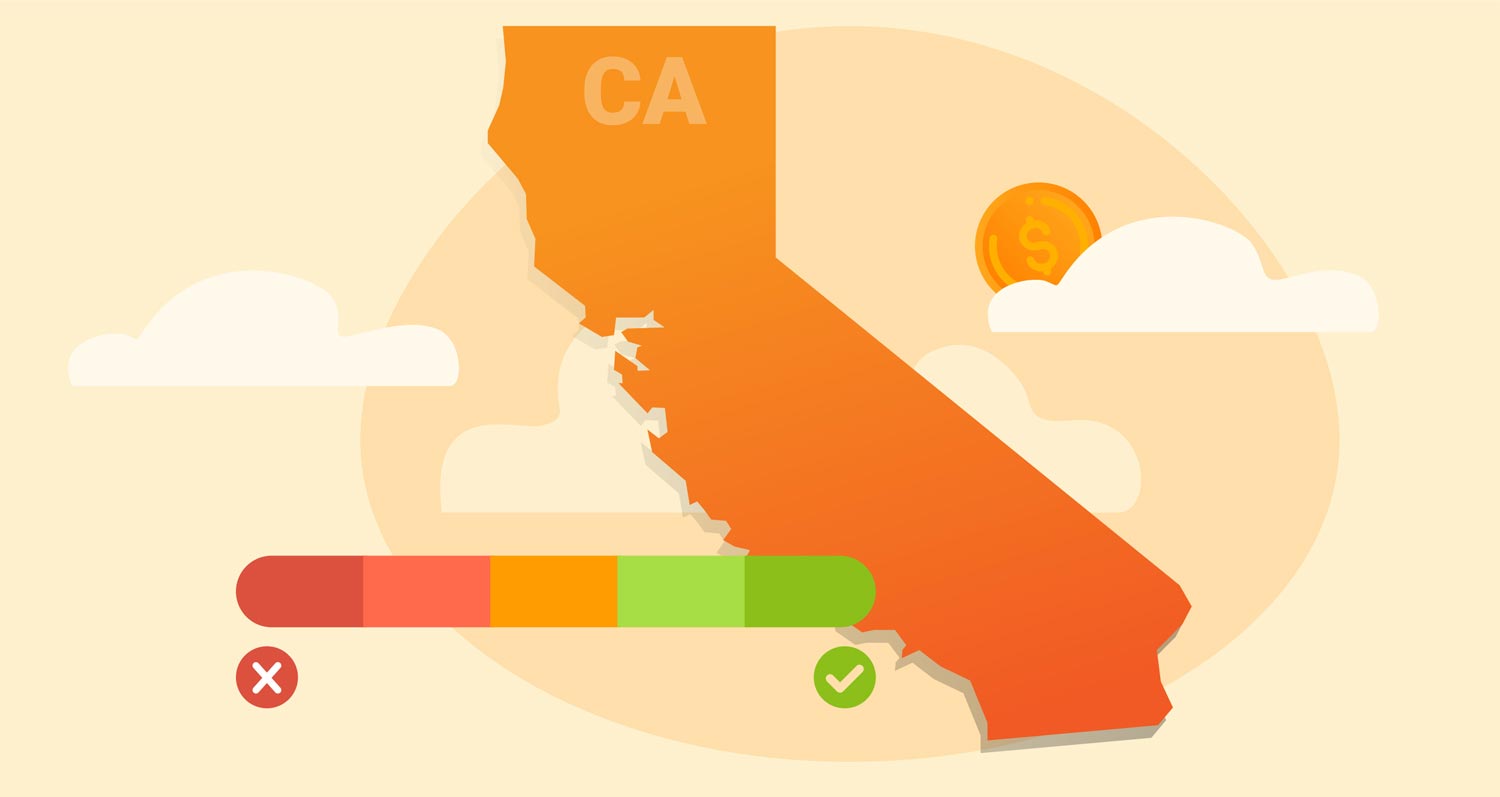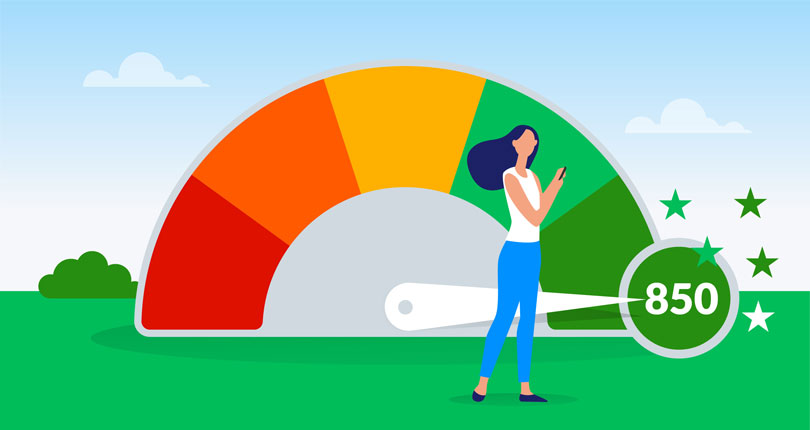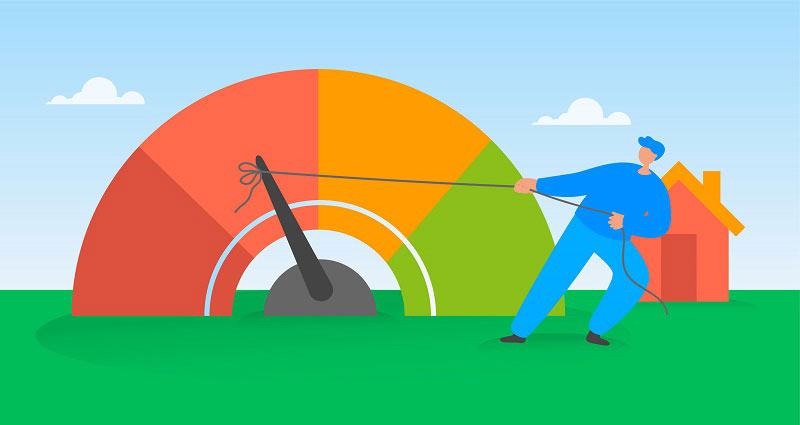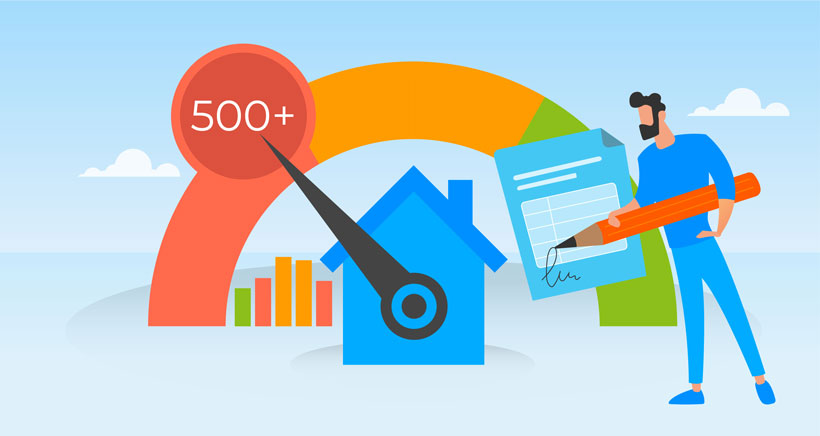
The average credit score in California is 680. In a state known for lavish lifestyles, you might think debt and California would go hand-in-hand. And, to an extent, you would be right. But California is a huge state with considerable diversity in behavior, cost of living, and other variables that affect the debt its residents carry.
Key statistics
- California’s average credit score is 680. The national average is 678.
- California’s average credit score rose 38 points from 2015 to 2019. The national average rose 48 points in the same period.
- There is a $9,000 difference between the city with the highest average amount of debt (San Rafael) and the city with the least average debt (Porterville).
- Between 2008 and 2016, the price of a single family detached home in California more than doubled. While California ranks at the top in terms of mortgage debt, the amount of debt has steadily dropped since 2008, from $70,100 to $57,170 in 2020.
- Californians carry credit card debt totaling more than $116 billion, which is about 11.5% of the nation’s more than $1 trillion in credit card debt. [6] WalletHub: Credit Card Debt Study https://wallethub.com/edu/cc/credit-card-debt-study/24400#average-debt-decrease-by-state
California’s Credit Score Over Time
| Year | Average Credit Score |
|---|---|
| 2015 | 670 |
| 2016 | 729 |
| 2017 | 680 |
| 2018 | 706 |
| 2019 | 708 |
| 2020 | 680 |
As the graph above reflects, California’s average credit score has consistently hovered between 670 and 750, putting the state squarely in the good to very good range of FICO scores. Whatever debt is carried by California’s citizens, they rank in the top third of all states for creditworthiness. [1] What Are the Different Credit Scoring Ranges? https://www.experian.com/blogs/ask-experian/infographic-what-are-the-different-scoring-ranges/
While you would think this statistic is one to boast about, California has experienced an unintended consequence of its citizens’ excellent credit scores: Californians have become increasingly popular targets for identity thieves. In fact, California’s annual identity thefts consistently outnumber those of any other state. [1] What Are the Different Credit Scoring Ranges? https://www.experian.com/blogs/ask-experian/infographic-what-are-the-different-scoring-ranges/

How to Build Credit When You Have None
Building credit from scratch can be a lot easier when you understand where to start and which mistakes to avoid.
Download our guideHow Credit Scores in California Compare to Other States
| Year | Average Credit Score - CA | National Average |
|---|---|---|
| 2015 | 670 | 658 |
| 2016 | 729 | 713 |
| 2017 | 680 | 678 |
| 2018 | 706 | 704 |
| 2019 | 708 | 706 |
| 2020 | 680 | 678 |
California’s credit scores have consistently stayed either at or slightly above the national average. Even in 2012, as the country was just starting to climb out of the Great Recession, California credit scores remained in the top three nationwide (along with New Jersey and Massachusetts). [2] California has third highest credit scores in United States https://www.bizjournals.com/sanfrancisco/news/2012/03/14/california-third-highest-credit-score.html Since then, California’s average credit score has only improved, rising from 670 in 2015 to 708 in 2019. California was tied for second with Michigan for the most improved average credit score in the country, missing Nevada’s top-ranked score increase by only three points. [3] Californian credit scores take nation’s second-largest jump? https://www.ocregister.com/2020/01/20/californian-credit-scores-take-nations-second-largest-jump/
Debt in California
As of 2019, the average of total household debt in California was $73,400. Over the last decade, the economy as a whole dramatically improved; that was especially true for California. Of course, the current pandemic has changed all of that, but its long-term effects remain to be seen.
From the time the state began its climb out of the Great Recession in 2010 until the end of 2019, California’s unemployment rate plummeted from an abysmal 12 percent to 3.9 percent. [11] Unemployment Rate in California https://fred.stlouisfed.org/series/CAUR However, even though the unemployment rate has dropped, California consumer debt continues to rise. A primary culprit for this is the rising cost of living, along with increased costs for higher education and transportation. These are costs that are familiar to all Americans, but housing costs are a major economic indicator and one that Californians struggle with when it comes to debt.
California’s size means that its debt issues can vary widely from city to city. Here are some statistics from a study that looked at 165 of California’s mid- to large-sized cities. [12] 5 of the top 10 California cities with the biggest credit card balances are from Orange County https://www.ocregister.com/2019/06/18/what-california-cities-have-the-biggest-credit-card-balances/
Credit Card Loan Balances - Highest
| Rank | City | Debt | Percent of Residents with debt |
|---|---|---|---|
| 1 | San Rafael | $13,515 | 92% |
| 2 | Laguna Niguel | $12,123 | 90% |
| 3 | Lake Forest | $11,722 | 91% |
| 4 | Thousand Oaks | $11,545 | 91% |
| 5 | Yorba Linda | $11,311 | 91% |
Credit Card Loan Balances - Lowest
| Rank | City | Debt | Percent of Residents with debt |
|---|---|---|---|
| 1 | Porterville | $4,510 | 78% |
| 2 | Huntington Park | $4,582 | 77% |
| 3 | Paramount | $4,644 | 79% |
Mortgage Debt
| Year | Average Mortgage Debt - CA | Average Mortgage Debt - US |
|---|---|---|
| 2003 | $39,410 | $23,740 |
| 2004 | $45,700 | $26,590 |
| 2005 | $52,700 | $29,230 |
| 2006 | $62,590 | $33,400 |
| 2007 | $70,080 | $37,250 |
| 2008 | $70,100 | $38,490 |
| 2009 | $65,460 | $36,810 |
| 2010 | $60,330 | $35,010 |
| 2011 | $57,220 | $34,200 |
| 2012 | $54,400 | $33,230 |
| 2013 | $51,290 | $31,630 |
| 2014 | $51,850 | $31,520 |
| 2015 | $51,190 | $31,330 |
| 2016 | $51,890 | $31,590 |
| 2017 | $54,640 | $32,940 |
| 2018 | $55,920 | $33,680 |
| 2019 | $57,170 | $34,790 |
Mortgage debt in California is far above the national average. Additionally, between the years of 2004 and 2007, it outpaced the national average. Of course, the Great Recession of 2008 was the great equalizer, where the slope of the curve starts to once again resemble its lower national average counterpart.
Skyrocketing real estate prices keep California’s stats above the average for the rest of the country. Since the real estate bubble burst in 2008, California’s real estate market has rebounded impressively. In 2016, the median price of an existing single-family home in California was $526,580, double the amount just after the recession hit. [4] Consumer Debt in California https://www.debt.org/faqs/americans-in-debt/consumer-california/ According to Experian, California had the second highest mortgage debt in the country after Washington, D.C. [5] Mortgage Loan Debt Increases for the Seventh Straight Quarter https://www.experian.com/blogs/ask-experian/how-much-americans-owe-on-their-mortgages-in-every-state/?pc=sem_exp_adnet&cc=sem_exp_adnet_ad_b182566273250737496239839151735978751986
Credit Card Debt
| Year | Average Credit Card Debt - CA | Average Credit Card Debt - US |
|---|---|---|
| 2003 | $3,080 | $2,960 |
| 2004 | $3,120 | $3,040 |
| 2005 | $3,160 | $3,060 |
| 2006 | $3,450 | $3,170 |
| 2007 | $3,960 | $3,490 |
| 2008 | $4,360 | $3,670 |
| 2009 | $4,020 | $3,370 |
| 2010 | $3,530 | $3,050 |
| 2011 | $3,310 | $2,950 |
| 2012 | $3,190 | $2,850 |
| 2013 | $3,100 | $2,710 |
| 2014 | $3,050 | $2,730 |
| 2015 | $3,060 | $2,800 |
| 2016 | $3,220 | $2,930 |
| 2017 | $3,420 | $3,100 |
| 2018 | $3,610 | $3,220 |
| 2019 | $3,810 | $3,390 |
Credit card debt in California is consistently above the national average. The state also holds the top spot for total credit card debt overall at $116,331,485,435. [6] WalletHub: Credit Card Debt Study https://wallethub.com/edu/cc/credit-card-debt-study/24400#average-debt-decrease-by-state As you might expect, San Francisco, the city with some of the highest housing prices in the United States, also has the highest average credit card debt in California, with the average person carrying a balance over $7,000 on their card.
Given the high real estate prices and high cost of living, it might seem like a consumer is doomed if they incur debt in a state where the numbers seemed stacked against them. However, California has some of the strictest consumer protections for people carrying unsecured debt. California law provides a strict four-year limitation for litigation to collect unsecured, unpaid debts. [7] The Debt Story in California https://www.dailypress.com/blogs/dp-ugc-article-the-debt-story-in-california-2018-09-15-story.html Of course, an unpaid credit card debt will adversely impact the borrower’s credit score, but that’s generally where the penalties end if your debt is not secured with collateral.
Car and Auto Debt
| Year | Average Auto Loan Debt - CA | Average Auto Loan Debt - US |
|---|---|---|
| 2003 | $3,150 | $2,960 |
| 2004 | $3,300 | $3,040 |
| 2005 | $3,530 | $3,240 |
| 2006 | $3,640 | $3,360 |
| 2007 | $3,550 | $3,360 |
| 2008 | $3,450 | $3,310 |
| 2009 | $3,020 | $3,030 |
| 2010 | $2,770 | $2,950 |
| 2011 | $2,770 | $3,050 |
| 2012 | $2,950 | $3,270 |
| 2013 | $3,130 | $3,420 |
| 2014 | $3,420 | $3,720 |
| 2015 | $3,820 | $4,070 |
| 2016 | $4,140 | $4,340 |
| 2017 | $4,380 | $4,520 |
| 2018 | $4,580 | $4,700 |
| 2019 | $4,710 | $4,850 |
Auto loan debt in California, while slightly below the national average, is still consistently on the rise. That trend follows the national trends as well. The main cause of this is the financing arrangements that dealers present to consumers, particularly those consumers with credit scores that qualify for only subprime auto loans. [8] Driving Into Debt: Americans Owe $1.2 Trillion on Auto Loans https://www.nbcbayarea.com/news/local/driving-into-debt-americans-owe-12-trillion-on-auto-loans/150381/ Often these loans are not through traditional banks, but rather are made through auto finance companies that charge higher interest rates. As a result, delinquencies through these companies are on the rise, even when the economy is growing.
Student Loan Debt
| Year | Student Loan Debt - CA | Student Loan Debt - US |
|---|---|---|
| 2003 | $970 | $1,060 |
| 2004 | $1,340 | $1,440 |
| 2005 | $1,480 | $1,610 |
| 2006 | $1,780 | $1,970 |
| 2007 | $2,000 | $2,250 |
| 2008 | $2,350 | $2,670 |
| 2009 | $2,650 | $3,010 |
| 2010 | $2,960 | $3,370 |
| 2011 | $3,140 | $3,620 |
| 2012 | $3,510 | $4,000 |
| 2013 | $3,720 | $4,250 |
| 2014 | $3,890 | $4,490 |
| 2015 | $4,010 | $4,660 |
| 2016 | $4,190 | $4,920 |
| 2017 | $4,330 | $5,130 |
| 2018 | $4,530 | $5,390 |
| 2019 | $4,640 | $5,510 |
Increasingly, student loans are a common form of debt. Because the price of college continues to outpace inflation, each subsequent graduating class is saddled with more debt when they graduate. In one of the few bright spots surrounding student loan debt, students in California seem to be carrying less debt than the national average. In 2016, fewer than half of California’s graduating seniors left school with education debt. [4] Consumer Debt in California https://www.debt.org/faqs/americans-in-debt/consumer-california/
One of the things California has going for it is a job market that offers high salaries. This allows a student population to handle debt responsibly, even where that debt dollar amount is on the rise. But add California’s high cost of living into the equation and it’s understandable that there are certain demographics where delinquencies and defaults are on the rise.
The San Francisco Bay Area is feeling this pressure. More than 730,000 residents of the Bay Area with student loans collectively owe nearly $26.6 billion. [10] At What Cost? Student Loan Debt in the Bay Area https://www.frbsf.org/community-development/files/student-loan-debt-in-the-bay-area.pdf Delinquencies are being seen not only in demographics from low-income neighborhoods, but also among those with less than $15,000 remaining on their loans.
Many factors other than income can affect student loan defaults, such as state divestiture in funding higher education, rising costs (tuition, rent, and other costs of living), and wage stagnation.
Sources
- [1] What Are the Different Credit Scoring Ranges? https://www.experian.com/blogs/ask-experian/infographic-what-are-the-different-scoring-ranges/
- [2] California has third highest credit scores in United States https://www.bizjournals.com/sanfrancisco/news/2012/03/14/california-third-highest-credit-score.html
- [3] Californian credit scores take nation’s second-largest jump? https://www.ocregister.com/2020/01/20/californian-credit-scores-take-nations-second-largest-jump/
- [4] Consumer Debt in California https://www.debt.org/faqs/americans-in-debt/consumer-california/
- [5] Mortgage Loan Debt Increases for the Seventh Straight Quarter https://www.experian.com/blogs/ask-experian/how-much-americans-owe-on-their-mortgages-in-every-state/?pc=sem_exp_adnet&cc=sem_exp_adnet_ad_b182566273250737496239839151735978751986
- [6] WalletHub: Credit Card Debt Study https://wallethub.com/edu/cc/credit-card-debt-study/24400#average-debt-decrease-by-state
- [7] The Debt Story in California https://www.dailypress.com/blogs/dp-ugc-article-the-debt-story-in-california-2018-09-15-story.html
- [8] Driving Into Debt: Americans Owe $1.2 Trillion on Auto Loans https://www.nbcbayarea.com/news/local/driving-into-debt-americans-owe-12-trillion-on-auto-loans/150381/
- [9] What and Who is Driving Delinquencies in Auto Loans https://bankingjournal.aba.com/2019/05/what-and-who-is-driving-delinquencies-in-auto-loans/
- [10] At What Cost? Student Loan Debt in the Bay Area https://www.frbsf.org/community-development/files/student-loan-debt-in-the-bay-area.pdf
- [11] Unemployment Rate in California https://fred.stlouisfed.org/series/CAUR
- [12] 5 of the top 10 California cities with the biggest credit card balances are from Orange County https://www.ocregister.com/2019/06/18/what-california-cities-have-the-biggest-credit-card-balances/
- [13] March, 2020 Housing Market Trends Report https://www.realtor.com/research/march-2020-data/






